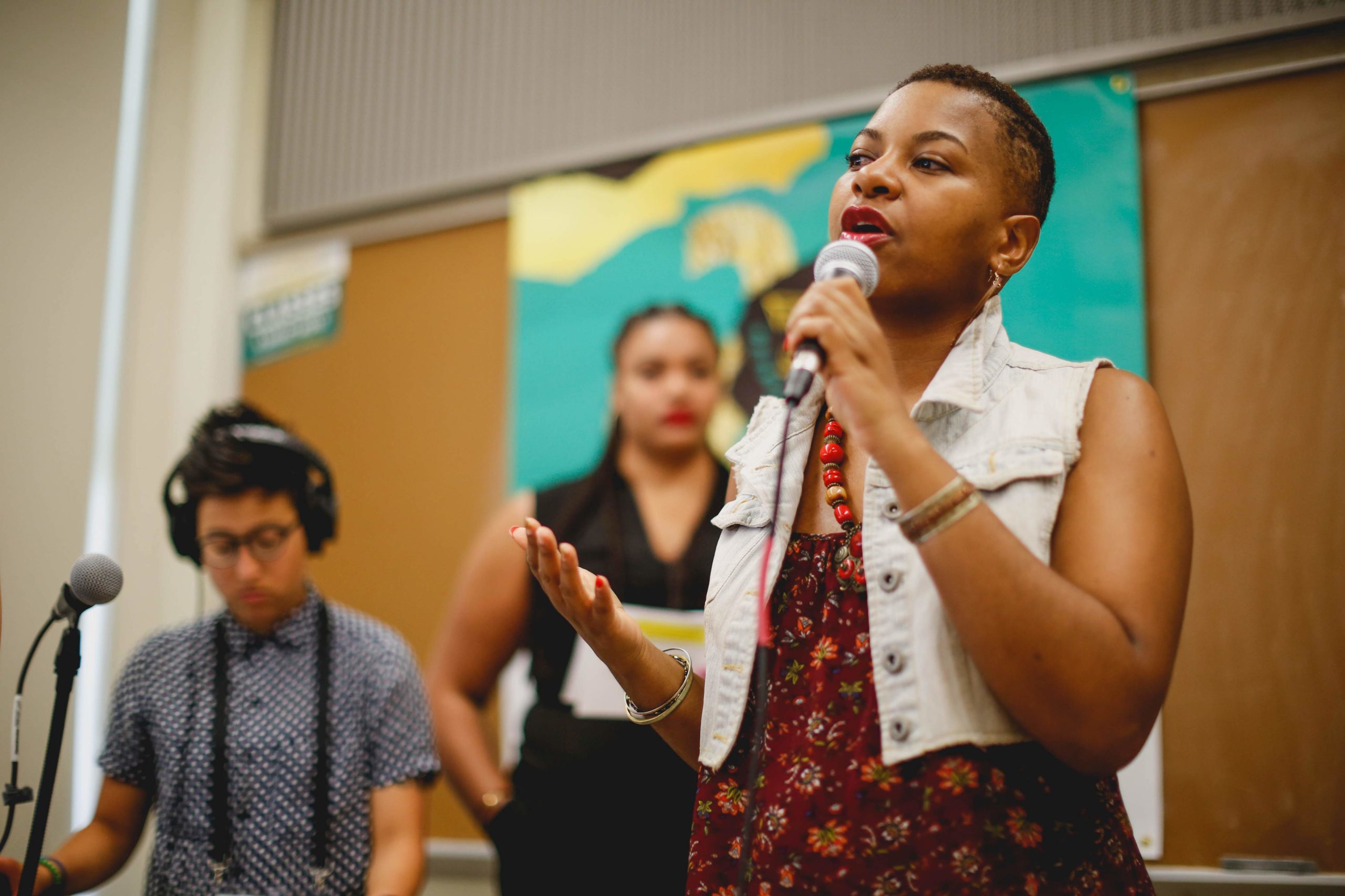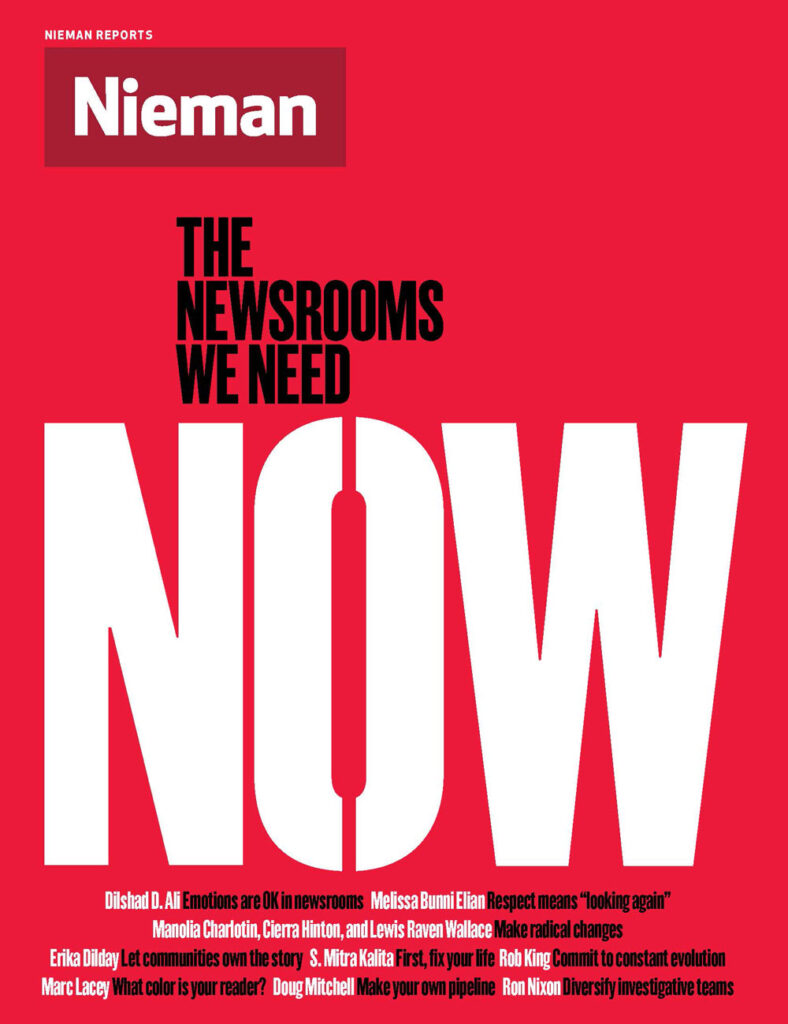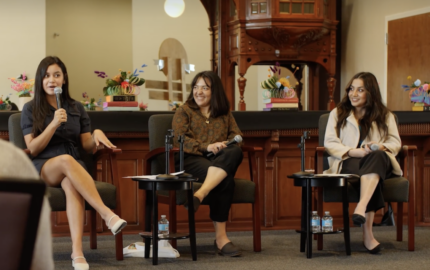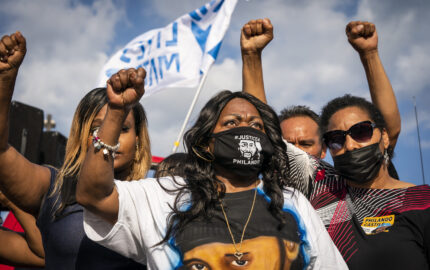Last summer I found myself at the M.W. Stringer Grand Lodge in Jackson, Mississippi. Considered “the epicenter of the civil rights movement,” the well-worn building was once the training site for the Freedom Riders and home to the Student Nonviolent Coordinating Committee. It seemed a fitting place to launch Freedomways, a journalism fellowship prioritizing women of color and LGBTQ+ people rooted in the American South and committed to doing reporting that advances justice.
Named after the journal that published the work of Black freedom fighters, Freedomways is a program of Press On, a Southern media collective that supports movement journalism — journalism that meets the needs of communities directly affected by injustice.
I am now a board member of Press On, but I began with the organization as a mentor in the inaugural Freedomways cohort, along with journalists Ko Bragg and Cynthia Greenlee. With the help of Press On co-founders Anna Simonton and Manolia Charlotin, we spent eight months helping eight fellows tackle reporting projects about complex issues like reproductive injustice in Georgia and how Black history is taught in America.
When we first met the fellows in Jackson, we focused on learning about movement journalism, which required unlearning transactional and extractive practices and doing away with the myth of objectivity. Fellows were asked to conceive of reporting that centered the most impacted people, urged to think through strategies for engaging the local community, and encouraged to talk through the kind of intervention or contribution they wanted their reporting to make. We spent hours listening and learning from Press On staff, but the fellows and mentors couldn’t seem to escape teary conversations about navigating racist colleagues and toxic newsrooms in an already stressful industry rife with instability.
Movement journalism is journalism that meets the needs of communities directly affected by injustice
While we found solace in each other, there was a heaviness in the Stringer Lodge, a collective trauma experienced by journalists of color who’d been passed over, demeaned, dismissed, and too often discarded.
There was no way for us to know that in a year, a nationwide uprising would unfold during a pandemic, laying bare systemic inequalities that would lead to a disproportionate number of Black, Indigenous, and Latinx people — the same communities that comprised our fellowship — dying from Covid-19. Soon, our country would be on the precipice of what feels like a revolution, and it would force the journalism industry to face a reckoning of its own.
I’ve tried writing this article for months, committing the ultimate journalistic sin of ghosting my editor when the going got tough. The problem has been two-fold: My own ups and downs in the industry, and the overwhelming task of defining an emerging movement that I am very close to but in no way the creator of.
My understanding of movement journalism and my newly-embraced identity as a movement journalist have been shaped entirely by the work of journalist Lewis Wallace, a co-founder with Charlotin and Simonton of Press On , and a report written by Simonton for Project South, an organization focused on cultivating movements around social, economic, and political issues in the South.
As part of her own fellowship at Project South, Simonton set out to write “Out of Struggle: Strengthening and Expanding Movement Journalism in the U.S. South,” with the ultimate goal of launching a media organization that would — in part — produce investigative journalism in service of social, political, and economic transformation, using input from organizers and culture workers throughout the South to identify under-reported or badly reported stories.
According to the report, movement journalism has several lofty goals; chief among them are prioritizing stories that amplify the power of people, producing news that is based on the experiences and identities of oppressed people, and developing shared political analysis between journalists and communities. Traditional journalism, on the other hand, regularly upholds oppressive and harmful ideologies. In mainstream immigration reporting, for example, more space is given to the architects of inhumane policies that brutalize immigrant communities than to the survivors of this state-sanctioned violence. Immigrants essentially become a footnote in stories about the circumstances shaping their lives, and the root causes of migration are rarely addressed.
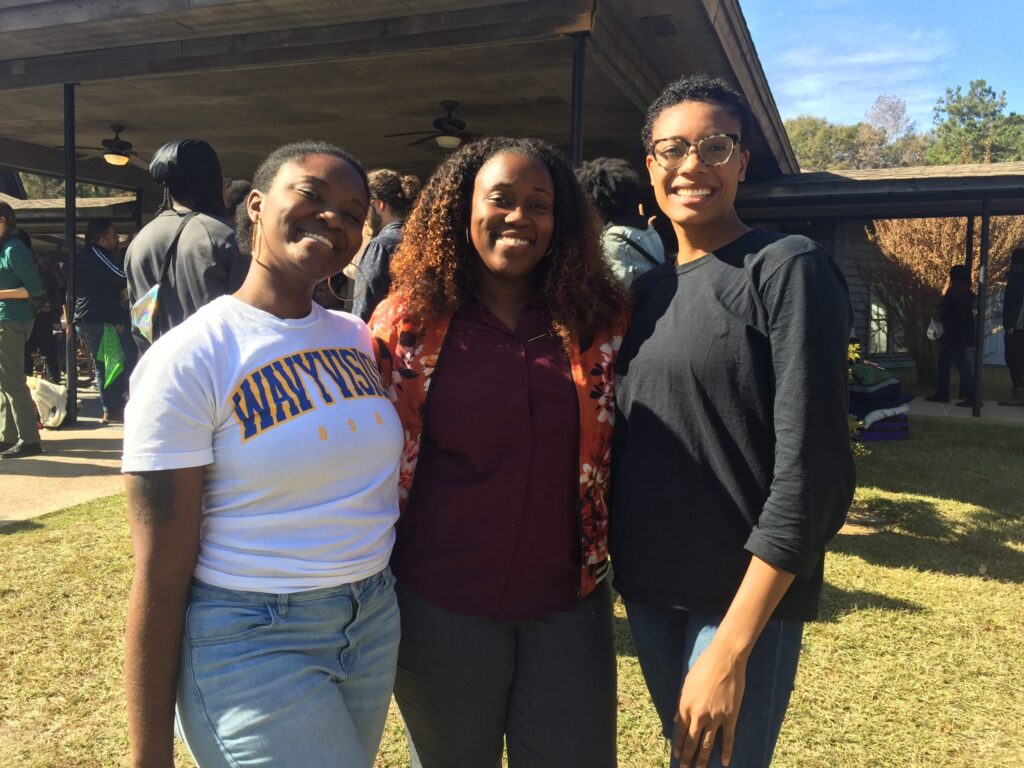
What is needed now more than ever is community-focused, solutions-based reporting — and this reporting is at the core of movement journalism.
But shifting into this framework can be especially dicey for journalists of color, who are often dismissed as activists and advocates if they report on communities to which they belong. In fact, when Simonton engaged older journalists of color around her Project South report, this was a primary concern. “They had to fight for years to have a certain credibility as a journalist at all. [A]ttaching some adjective to it, whether it’s ‘movement’ or something else, is going to detract from that hard-won title of just ‘journalist,’” Simonton says.
Simonton’s fellow Press On co-founder Charlotin does not have a traditional journalism background, and she’s never been particularly concerned about how she is perceived by mainstream journalists. She was a youth activist before she began working on political campaigns. More than a decade ago, she was tapped to be the editor and business manager of the Boston Haitian Reporter, a local paper she contributed to after the earthquake that decimated her parents’ home country. Her reporting focused on how local organizers were getting aid to Haiti. When she eventually moved on to The Haitian Times, she focused almost exclusively on community reporting that prioritized covering local movements that worked to improve the conditions of Haitian peoples’ lives.
This was movement journalism, she says; she just didn’t have the language to call it that.
“Movement journalism is about putting the community at the center. The stories have a purpose. They’re supposed to expose, hold accountable, help do a narrative shift, or move something forward. We’re not movement megaphones, but we are record keepers. We are accountability holders,” Charlotin says.
To fully understand the framework, one must also consider movement journalism’s Southern origin story.
For Press On, Charlotin says, it’s important to make clear that the organization’s work is rooted in the South and Black freedom struggles and aligned with current movements trying to change conditions and expose unjust systems. Press On’s co-founders’ articulation of this form of journalism and its political home may not resonate with journalists who work in the media anchors of New York and Washington, D.C. or people who see the South as a “backwards” monolith, home to “Trump country.”
“Press On upholds the traditions of Black freedom struggles in the South because Black people have led every major freedom struggle in this country. Ida B. Wells [is] the mother of investigative journalism and movement journalism. Lynching was a terrorist campaign and she used journalism to expose it,” Charlotin says. The South “is a part of the country that has always forced the country to look at itself more clearly. It’s always been more radical. The way the oppression works in the South, it actually requires a different kind of courage, a different kind of principled movement, and a different kind of innovation.”
I couldn’t have known what Charlotin meant before I moved to North Carolina four years ago. I don’t believe any place in the South is more racist than anywhere in the North, but I cannot deny the particular way that oppression slithers and stagnates here.
Reporting on injustice in the South simply requires a different way of working. I recently wrote about my evolution as a journalist and how I came to embrace movement journalism. What was missing from that story was the Southern context. It was only once I was in North Carolina building trust within immigrant communities in areas where there was less collective organizing that I had to learn to develop contingency plans and additional systems for keeping people safe. I learned to approach my work collaboratively and do whatever is humanly possible to reduce harm.
These principles — cornerstones of traditional journalism but of heightened importance in movement journalism — have never failed me, and following them has led to some deeply sensitive reporting that remains some of the most powerful and personally meaningful I’ve ever done. I’m thinking in particular about a recent series in Prism, a BIPOC -led nonprofit news outlet that centers the people, places, and issues currently underreported by national media, where I am a senior reporter. I wrote about immigrants working in poultry processing plants during the pandemic, but the reporting that gave me the skillset to complete that series was developed when I wrote in 2018 about Colectivo Santuario, an undocumented immigrant-led collective comprised of people in sanctuary nationwide who were facing deportation.
After months of talks, organizers invited me to join an unprecedented gathering in Durham, North Carolina. Undocumented immigrants took the risky decision to secretly leave their sanctuary churches so that they could gather, learn to organize, and develop their own deportation defense campaigns. For more than two days, I was the only reporter in the room. It required an enormous amount of trust on behalf of the people in sanctuary and the organizers working with them, and endless negotiations about what was safe to publish and when. (It was imperative that the reporting was published only once everyone safely returned to their sanctuary churches; otherwise ICE could have detained and deported them when they were en route.) The series helped the public understand that immigrants in sanctuary weren’t simply victims of the Trump administration, but rather leaders in the immigrant justice movement who were organizing for their freedom.
What is needed now more than ever is community-focused, solutions-based reporting, which is at the core of movement journalism
Because of Project South’s report and the work of Press On, movement journalism seems at home in the South. But can movement journalism exist outside the South? Can it exist inside mainstream journalism?
Yes, but it’s complicated.
Wallace is based in Durham, North Carolina where he is an independent journalist and works alongside lead trainer Mia Henry to run Press On’s journalism trainings for newsrooms. Given the reckoning currently rocking the journalism world, Wallace and Henry are particularly busy with their “Strategies for Transforming Journalism” training, developed with the goal of pushing people in the industry to think beyond “diversity” and instead delve into the systems of power and oppression that shape newsrooms and the communities they cover. The training is part of a larger strategy to transform journalism by helping people in the industry identify and disrupt oppression in their newsrooms and begin shifting narratives.
These are tall tasks, and this work is ongoing. I’ve attended a few of Press On’s trainings and recently helped facilitate a training for the Allied Media Conference about shifting narratives with Migrant Roots Media’s founder Roxana Bendezú, all of which has allowed me to connect with journalists nationwide about their experiences. It has become very clear to me that mainstream newsrooms can feel like deeply unwelcoming places, both for journalists with marginalized identities and journalists sincerely invested in shifting narratives about communities of color. But there are powerful examples in mainstream media of people successfully working at these intersections.
In reporting this article, there was a single piece of mainstream journalism that was repeatedly cited by the people I interviewed as a pivotal piece of movement journalism, the author of which has become a sort of positivity model for BIPOC journalists.
Nikole Hannah-Jones’ “1619 Project” signaled the potential for a fundamental shift in the journalism industry. The initiative was published nearly a year before the nationwide uprising as part of the Movement for Black Lives caused revolts in big newsrooms — including Hannah-Jones’, forcing the industry to grapple with the growing disconnect between “a tradition that aims to persuade the widest possible audience that its reporting is neutral and journalists who believe that fairness on issues from race to Donald Trump requires clear moral calls,” as The New York Times reported.
When I spoke to Hannah-Jones, a staff writer covering racial inequality for The New York Times Magazine, which published “The 1619 Project,” I defined movement journalism as journalism in service of liberation and journalism that seeks to advance justice. I wanted to know: Did this resonate with her?
“I have never heard that term before. I have not identified myself in that way, but based off of that definition, it’s certainly how I would describe my work,” she says.
A fundamental goal of movement journalism is shifting narratives, which aligns with “The 1619 Project”’s goal of reframing American history and the way we understand it. Hannah-Jones says it means something when reporters like her use the platform of The New York Times to “force a type of reckoning” that the country has “largely refused to have.” Part of what enabled her to tackle the task is her distinctive voice and positionality at The New York Times, both of which played roles as important as her investigative skills.
“[B]roadly it would be dishonest to say there aren’t some tensions around that, tension with editors and other journalists. People within the institution are probably uncomfortable with how I operate, and they are maybe right to feel that way,” Hannah-Jones says. “We’re in an environment where people want to find reasons to discount our reporting and being very explicit about your perspective in your reporting can make journalists fighting for credibility uncomfortable. I understand that.”
In other words, exact attributes that can usher groundbreaking reporting into existence can also be attributes that make colleagues in the journalism industry uncomfortable.
I have never worked at the kind of outlet that would have an issue with me openly identifying as a movement journalist, which is to say pronouncing that I do not adhere to the myth of objectivity and that I am consciously choosing to operate in and engage with the journalism industry in a fundamentally different way. For these reasons, I can almost understand why more traditional journalists or older journalists of color who’ve had to fight to be seen as “legitimate” may recoil at the thought of their industry embracing movement journalism. There are trade-offs depending on what area of the media industry you work in. Those of us who work in small, nonprofit newsrooms or as part of independent media don’t have the same restrictions that reporters at legacy outlets do. Broadly speaking, we can openly question objectivity, for example, or tweet “defund the police,” and at the end of the day no one is calling for our termination.
While New York Times reporters have unprecedented access and extensive resources, the journalists who work there largely cannot operate as freely. But Hannah-Jones acknowledges she operates “in a unique space” at The New York Times, one where magazine journalists have more “voice and leeway” than those working on the newspaper side.
Part of this comes from the way that she has covered her beat. Hannah-Jones says her editor encourages her to do work that is “deeply reported and personal,” which makes the “façade of objectivity impossible to maintain.” But on social media, she also admits she’s more willing to reveal what she thinks about things and has been given the space to do that, perhaps more than journalists at the outlet who have more traditional beats. In my estimation, one of the true allures of movement journalism is that it doesn’t require journalists with more traditional beats to pretend they are not appalled by what they cover. While mainstream journalists may not embrace this movement entirely, it is my hope that it spirals out in some small way. For example, it would be powerful if our industry didn’t have to pretend that reporting the president “lied” about something was controversial.
Hannah-Jones argues that there needs to be space for outspoken people to do high-quality journalism at institutions like The New York Times. She says that for her, this means following in the tradition of Black journalists who could not be objective observers in a country that has tried to keep Black people from full citizenship. The “overarching argument” in all of her work is the same, she says.
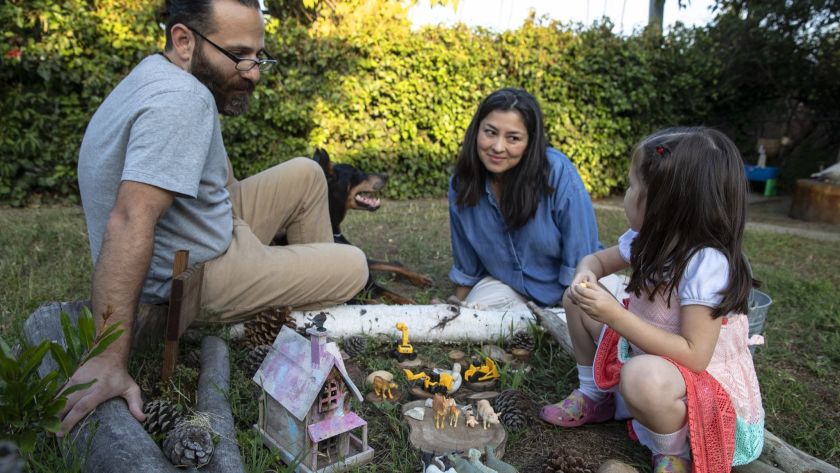
“The argument [I am always making] is that Black people have never been the problem,” Hannah-Jones says. “All of my work is trying to show that the condition of our lives has been in response to conditions that were created and sustained for 400 years, yet we are posed as the problem when the real problem is that we are a country [imposing a] racial caste. If we could learn that lesson it could be transformative for all of us.”
My conversation with Hannah-Jones led me to think about the role of a reporter’s identity and why I was more apt to assume journalists of color writing about communities of color would more easily embrace movement journalism. It was a deeply flawed and unhelpful presumption, especially given how hard journalists of color have to fight for their reporting to be seen as valid.
This was brought to the surface when I spoke to Esmeralda Bermudez, who joined the Los Angeles Times in 2008 to write narrative stories about the lives of Latinos, which allowed her to tap into subjects editors once deemed “too insular” — even in a city where Latinos comprise half the population. I deeply respect Bermudez’s work and the way she engages the communities she writes about on social media. Learning that she does not identify as a movement journalist helped me understand that there are aspects of movement journalism already present in the basic motivations of many people who enter the field, including those who are invested in social justice or want to see more accurate portrayals of their communities in reporting.
Bermudez told me she imagines that openly identifying as a movement journalist would be especially challenging for reporters of color, based on how much readers already project onto her reporting. This includes regularly being asked if she is concerned about being “pigeonholed” because she is a Latina journalist covering Latinx communities.
“The question itself is just such a farce of a question because you would never ask that question to anyone of just about any other beat,” says Bermudez. “You would never ask an environment reporter, ‘You’re so attached to the environment, how come you don’t want to write about something else?’ It’s such a racist question, really, that only people covering communities of color who happen to be [journalists] of color get asked.”
Bermudez almost never writes personally about her experiences as an immigrant who came to the U.S. as a child in the 1980s fleeing El Salvador’s civil war. In fact, during her 12 years with the Los Angeles Times, she has written just five personal pieces and three of those were in recent months. Her first personal piece, in 2018, is about a stranger demanding she speak English to her trilingual daughter, and her second, in 2019, is about why she and her husband — immigrants from El Salvador and Armenia — stopped celebrating Thanksgiving.
It is this latter piece that lulled me into thinking Bermudez would embrace the title of “movement journalist.” The crux of the piece is about Bermudez and her husband’s discomfort in realizing their daughter is being taught a sanitized, dishonest version of American history. “[I]f we couldn’t begin telling our children this nation’s story, how could we ever speak to them about our personal histories?” Bermudez writes.
Even though her identities are not at the center of her work, they inform Bermudez’s reporting lens, which is why her reporting on Latinx communities resonates so deeply with Angelenos — and with movement journalism. It is my firm belief that the more layered a reporter’s identity is, the more nuanced their work. In fact, one of journalism’s greatest scams was making marginalized reporters feel like our identities are a detriment.
Jose Antonio Vargas says that when he was coming up in journalism, the mere fact that he was openly gay and not white made it “extra hard” for his work to be seen as legitimate journalism.
Vargas is an undocumented Filipino journalist, author, and filmmaker who has worked in newsrooms since he was 17 years old, eventually landing at The Washington Post where he was part of a team that won a Pulitzer Prize in 2008 for reporting about the aftermath of the Virginia Tech shooting. For the entirety of his time in the traditional journalism industry, Vargas was in the U.S. without authorization.
Keeping up the facade became too much, so he “came out” as an undocumented immigrant in a June 2011 essay in The New York Times Magazine. In the piece, Vargas sheds light on the complexities of living as an undocumented person and the painful decisions he had to make to stay off the radar of federal immigration authorities. In my eyes, it is a pivotal piece of movement journalist that humanized the usually maligned decision immigrants make to work using fake papers in a country that has made it illegal to knowingly hire undocumented people.
In the years since his New York Times story, Vargas is rarely referred to as a journalist anymore, something that makes him bristle, given that his organization Define American operates from the understanding that journalism is a primary tool in shifting narratives about immigrant communities. Vargas says he is intrigued by movement journalism, but mostly because it’s what traditional journalism should have been in the first place.
Movement journalists make a concerted effort to connect with communities and shift how their newsrooms operate
“We are supposed to be fighting for justice. That’s what we do. That’s what we’re supposed to do [as journalists],” Vargas says. “I feel like in many ways what we’re fighting against is media as a corporate consumeristic capitalistic institution, when at heart it’s supposed to be about movement journalism. What we’re living through right now is the rise of countless movements: Racial justice and income inequality, climate change, the MeToo Movement, feminist movements, immigrant rights movements, the LGBTQ movement — all of this is at the heart of this changing world that we’re living in.”
This is an “extraordinary” time for journalism, Vargas says, one in which journalists of color are moving toward being able to embrace their identities in the context of their work.
Movement journalist Jonece Starr Dunigan says that in her newsroom in Birmingham, Alabama, this shift is happening. Dunigan was a fellow in Freedomways and is a reporter with AL.com’s Reckon, “a place for big ideas and tough conversations about Alabama.”
For Dunigan, movement journalism isn’t just about the writing. For example, she has pushed important conversations to the forefront in her state, including her launch of AL.com’s Black Magic Project, which highlights African Americans in Birmingham who “embody the bold and empowering spirit of those who fostered the civil rights movement.”
Dunigan serves as a necessary reminder that movement journalists don’t just cover stories a particular way; they make a concerted effort to connect with communities and shift how their newsrooms operate. As a Black reporter covering racial injustice, Dunigan admits that operating in this way can feel risky, but to her it’s worth the risk.
“The work that I’m doing affects me as a person and affects my identity. People may say to me, I’m only working this way because I’m a Black woman, or you’re only working your way because you’re a Latina. Part of that is true, but the other part of that is that we’ve seen the consequences with our own eyes when journalism gets it wrong,” Dunigan says.
“We’re at a pivotal point in journalism. I don’t want to see movement journalism get co-opted or become tokenizing; I don’t want to see it being used as another tool for ‘diversity.’ We’re talking about a real reshaping of how we think of journalism; what we thought of as journalism may crumble. You have to be ready to deal with that.”
